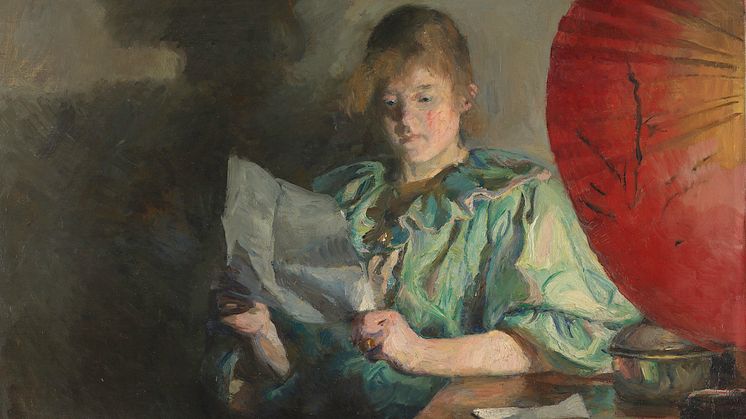
Press release -
Exhibitions at Nationalmuseum 2024
The year at Nationalmuseum begins with exhibitions about the Norwegian artist Harriet Backer and the Japanese designer Akira Minagawa. It then ends with a large exhibition about Romanticism with art both from the 19th century and contemporary art.
Harriet Backer
22 February–18 August 2024
Exhibited on the top floor
In spring and summer 2024, Nationalmuseum will be hosting an exhibition on Harriet Backer who, besides Edvard Munch, was Norway’s most influential artist in the late 19th and early 20th centuries. Backer was one of the most prominent colourists and portrayers of light and atmosphere in interiors. The exhibition highlights the innovative qualities of her art, as well as her central position in the Norwegian art scene at the turn of the twentieth century. The exhibition has been initiated by The National Museum, Oslo and Kode Bergen Art Museum, and organized in collaboration with Nationalmuseum Stockholm and Musée d’Orsay, Paris.
Design = Memory
Akira Minagawa & Minä perhonen
22 February–18 August 2024
Exhibited on the top floor
Akira Minagawa is one of the most prominent Japanese designers and the founder and lead designer of fashion and textile brand Minä perhonen. Minä perhonen textiles, clothes, design objects, as well as Akira Minagawa’s original artworks are all in a circular dialogue showcasing the creative process. The exhibition also reminds how the Nordic countries and Nordic design have always played a key role for Akira Minagawa.
The Romantic Eye
26 September 2024–5 January 2025
Exhibited on the top floor
The Romantic Eye takes a broad view of the period in 19th-century art known as Romanticism. The exhibition aims to explain what constituted Romanticism and how it influenced its time. It also shows that it was not purely a 19th-century phenomenon; rather, to this day, we still encounter many of the questions and ideas of that time. The exhibition includes 19th-century artists such as Peder Balke, Ernst Ferdinand Oehme, Caspar David Friedrich, Karl Friedrich Schinkel, Eugène Delacroix, Johan Christian Dahl and Marcus Larson. Among the contemporary artists represented are Mariele Neudecker, Leif Engström, Helene Schmitz, Ann Frössén, Lars Nilsson, Thomas Demand, Lovisa Ringborg and Paul Fägerskiöld.
Press images Akira Minagawa & Minä perhonen
Media enquiries
Hanna Tottmar, head of press, press@nationalmuseum.se, +46 8 5195 4400
Categories
Nationalmuseum is Sweden’s museum of art and design. The collections comprise some 700 000 objects, including paintings, sculpture, drawings and graphic art from the 16th century up to the beginning of the 20th century and the collection of applied art and design up to the present day. Nationalmuseum is a government authority with a mandate to preserve cultural heritage and promote art, interest in art and knowledge of art.

